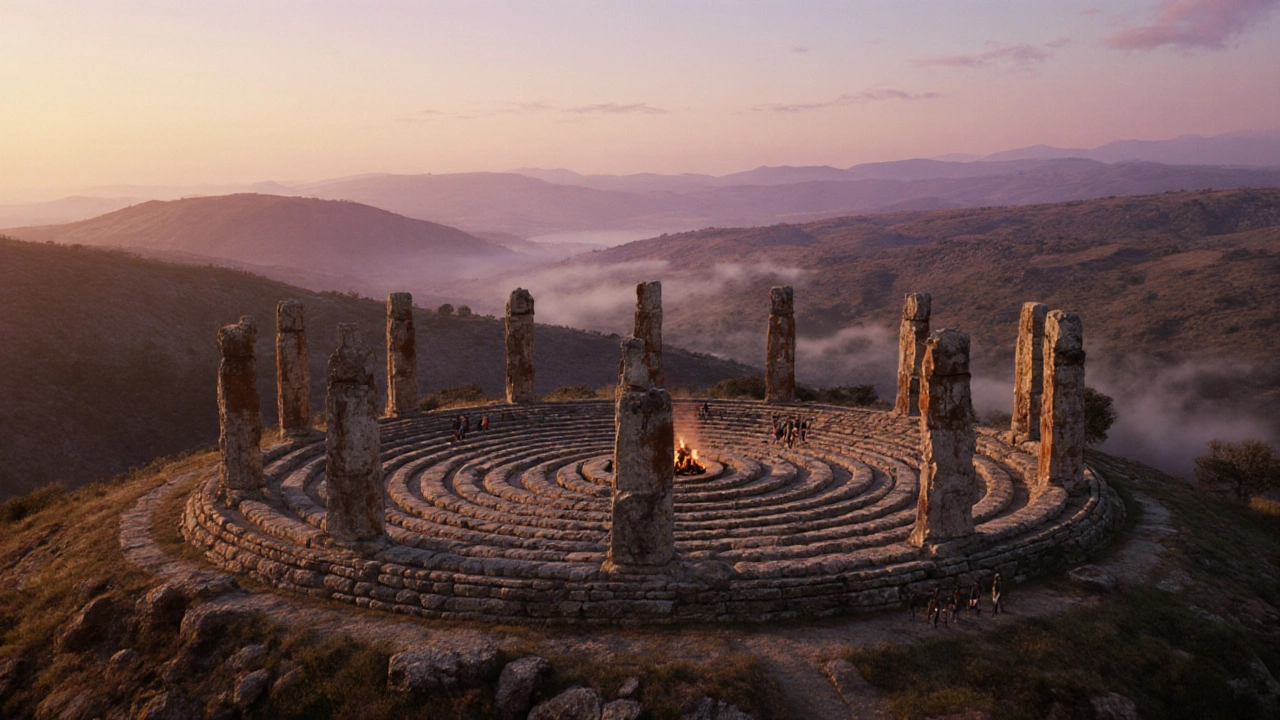
Explore Göbekli Tepe, the world's oldest temple, its age, archaeology, visitor tips, and why it reshapes our view of prehistoric humans.
When working with prehistoric architecture, the study of building techniques and designs that emerged in the stone‑age and early civilization periods. Also known as ancient construction, it reveals how early peoples shaped their environment using stone, wood and earth. This field encompasses heritage sites, protected locations that safeguard prehistoric structures for future generations, ancient monuments, stand‑alone edifices such as megalithic circles and rock‑cut shrines and the broader discipline of archaeology, the scientific method that uncovers and interprets material remains. In practice, oldest cities, places like Varanasi and Ujjain that have been continuously inhabited for millennia serve as living laboratories where prehistoric architecture meets modern life.
India’s heritage sites, many of which are UNESCO‑listed, protect some of the world’s oldest built environments. Think of the Bhimbetka rock shelters, where charcoal‑filled caves tell a story of early art and shelter building. Or the dolmens of South India, stone chambers that still stand against time. Visiting these places gives you a tactile sense of how early societies solved engineering challenges—how they moved massive stones, created stable roofs, and organized communal spaces. The experience often reshapes a traveler’s perspective on modern architecture, highlighting durability and simplicity over flash.
When you dive into the ancient monuments, like the rock‑cut temples at Mahabalipuram or the monolithic statues of the Deccan plateau, you’re also seeing the artistic ambition that accompanied early construction. These monuments link directly to the archaeology, fieldwork that dates the stone to specific eras, deciphers tool marks, and maps settlement patterns. For example, recent digs around the city of Ujjain have revealed mud‑brick foundations that predate recorded history, showing how urban planning began long before written records. Understanding these layers helps travelers appreciate why certain routes, markets, or festivals still exist today—they’re rooted in the same spaces first shaped by prehistoric builders.
For anyone planning a trip, the blend of oldest cities, with their winding alleys and ancient foundations, and the surrounding heritage landscapes creates a unique itinerary. You can wander the ghats of Varanasi, feel the pulse of a city that has existed for over 3,000 years, then step out to explore nearby prehistoric rock shelters that predate the city itself. This contrast of continuous habitation and static stone structures makes India a rare destination where past and present coexist visibly. Below, you’ll find articles that break down safety tips, travel costs, and specific site guides—all geared toward helping you experience prehistoric architecture without hassle. Let’s jump into the curated list and see which ancient wonders fit your next adventure.

Explore Göbekli Tepe, the world's oldest temple, its age, archaeology, visitor tips, and why it reshapes our view of prehistoric humans.